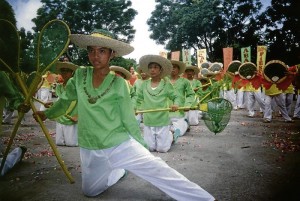
The faraway town of Lal-lo, Cagayan – north of the capital city of Tuguegarao (which is itself 483 kilometers north of Manila) – is trying to recover its lost glory. It was, after all, during olden days an important religious and political center in the Cagayan Valley.
One way to achieve this is through investments, economic development, and tourism. An economic zone is in the planning stage, while an international airport is being constructed. It will be completed in one and a half years, says Provincial Board Member Olive Pascual, wife of Lal-lo Mayor Florante C. Pascual.
The provincial board member is herself a former mayor of the town, and it was during her term that Lal-lo became a first-class municipality.
The cabibi (shells and shellfish) are a major agro-industrial activity in the town, which is along the Cagayan River, said to be one of the longest in the world. Three big barangay (villages) depend for their livelihood on the cabibi, which can be found in abundance year-round except during certain months when the current is strong.

The shells and shellfish cost P80-100 per kilogram here, with the oversupply marketed to Manila.
There is also a 1.5 km Cabibi Sanctuary in the Cagayan River. And some of the barangays are located near the delta of the West Philippine Sea (South China Sea).
The local government advocates ways of gathering the cabibi without damaging the shells. This is done manually, through diving (children are forbidden to dive) or through the use of the takó, a bamboo instrument which functions like a rake. Only the big shells are caught, the smaller ones left for another day.
The importance of the cabibi has led to the annual Cabibi Festival, week-long festivities climaxed by dance competitions in front of the Municipal Hall. The most recent such festival was staged early this month (August).
Clusters of teams, caparisoned in shell-inspired costumes and backed up by movable production designs, danced in lively formations, demonstrated how to gather shells, and paid tribute to shell craft and to Our Lady (“Viva Maria!”).

They saved the best for the last: the indigenous Agtas, with their drums and percussion instruments, spears and bow-and-arrows, courtship and war dances, while a voice-over announced their appeals: livelihood, decent housing, protection of their ancestral lands, and other urgent concerns.
“We want to attract investors and tourism is the premier selling point of the town,” says Municipal Budget Officer Lordinas Colosaga. “For this year, our budget for the Cabibi Festival is P1.5 million. We declare the budget; we adhere to auditing procedures.”
Tourism-oriented establishments, he says, support the festival because they know this leads to increased sales.
“We all do it in economic terms because tourism is vital to the economy,” Colosaga concludes.

